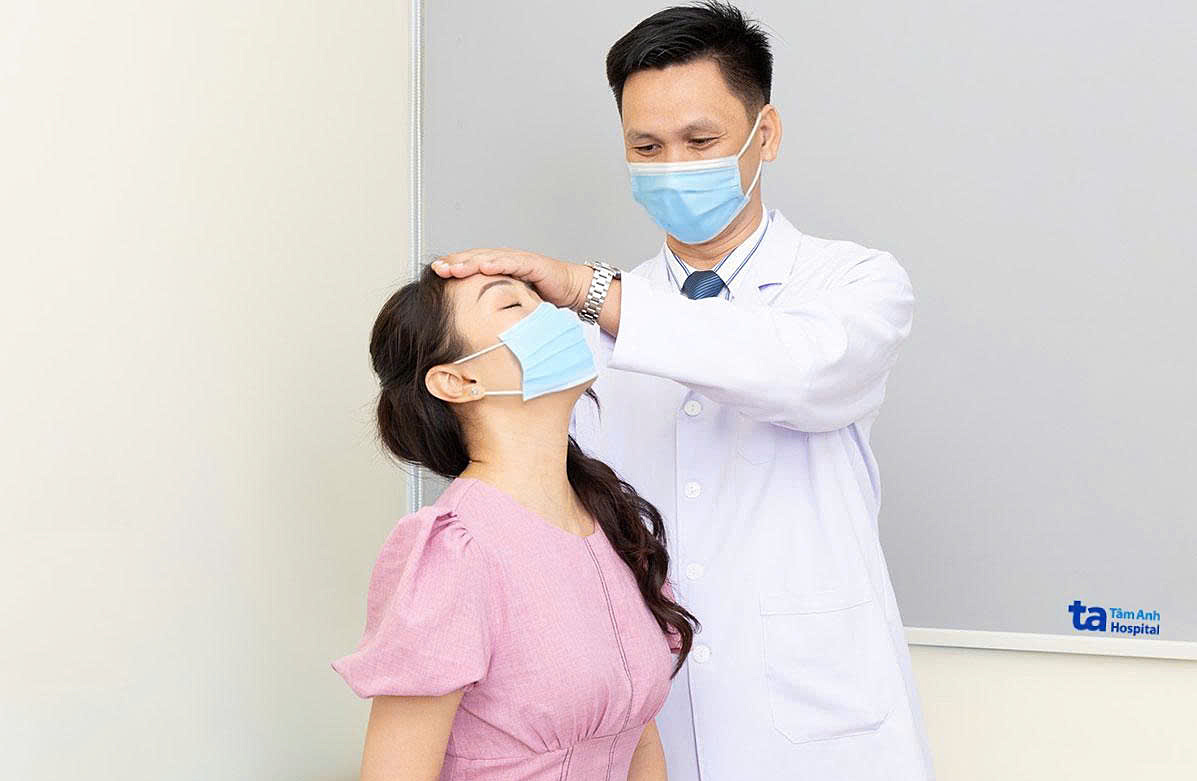Dr. Nguyen Hoang Thi from the Spine Unit at Tam Anh General Clinic, District 7, explains that cervical spondylosis, a natural aging process of the spine, commonly affects middle-aged and older individuals. It impacts the cartilage, discs, ligaments, and bones in the neck. However, in recent years, the condition has been appearing in younger people due to various factors, including poor posture and prolonged use of electronic devices and mobile phones.
Here are some warning signs of cervical spondylosis:
Neck pain and stiffness: Bone spurs caused by degeneration can irritate and compress surrounding nerve roots and tighten muscles, leading to neck pain, fatigue, and difficulty moving the neck. The pain often worsens with movement and work and improves with rest.
Shoulder pain and numbness in the hands: Cervical spondylosis can affect the spinal cord and nerves, causing shoulder pain and numbness that radiates down the arms. In severe cases, it can lead to muscle atrophy and reduced hand mobility.
Beyond the musculoskeletal system, the condition can also impact other organs. Nerve compression and muscle stiffness from degeneration can reduce blood flow, causing dizziness and pain in the forehead, around the eye sockets, and temples.
 |
Dr. Thi examines a patient's cervical spine function. Photo: Tam Anh General Clinic, District 7. (Photo courtesy of Tam Anh General Clinic, District 7) |
Dr. Thi examines a patient's cervical spine function. Photo: Tam Anh General Clinic, District 7. (Photo courtesy of Tam Anh General Clinic, District 7)
Dr. Thi explains that in addition to age, prolonged poor posture during work and daily activities contributes to cervical spondylosis. For effective treatment, patients need to combine medication with lifestyle changes and physical therapy.
Physical therapy helps reduce pain and restore spinal function. Doctors tailor specific therapy programs for each patient to alleviate deep pain, increase blood circulation, reduce inflammation, and improve range of motion. Surgery may be necessary for patients with nerve compression.
Several complications can arise if treatment is delayed:
Herniated disc: Degeneration and reduced curvature of the cervical spine increase pressure on the discs, potentially leading to bulging or herniated discs.
Spinal stenosis: Bone spurs caused by degeneration narrow the spinal canal, altering the cervical spine's structure and potentially compressing the spinal cord and nerve roots. This can cause headaches, pain in the shoulder blades, and arm pain.
Limb paralysis: Prolonged nerve root compression can damage nerves, disrupting signal transmission and leading to sensory disturbances in the limbs, and even paralysis of one or both arms.
Individuals should seek medical attention immediately upon noticing any warning signs of cervical spondylosis. Depending on the specific condition, doctors may recommend a 3 Tesla MRI, a 1975-slice CT scan, a CT scan with over 100,000 slices, electromyography, or other tests for accurate diagnosis and prompt treatment to prevent complications that can diminish quality of life.
Phi Hong
| Readers can submit questions about musculoskeletal disorders here for doctors to answer. |












